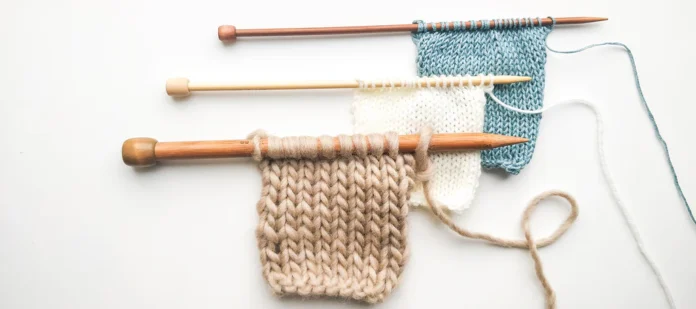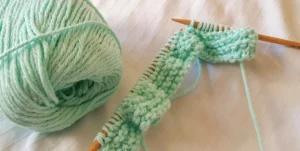If you’ve ever wanted to try knitting, you might be wondering where to start. Work with yarn and needles can seem confusing at first, but with the right guidance, you’ll find it enjoyable and rewarding. Knitting is a wonderful hobby that allows you to create beautiful and useful items, from cozy scarves to colorful blankets. This article will help you understand the basics of working with yarn and needles so you can start knitting with confidence.
Knitting is not just for older generations; it’s a craft that many people of all ages are discovering and enjoying. Whether you’re looking for a relaxing pastime or a creative outlet, learning to knit is a great way to spend your time. In this guide, we’ll break down the essentials of yarn and needles, helping you choose the right tools and get started on your first knitting project.
Choosing the Right Yarn
Selecting the right yarn is crucial for a successful knitting experience. Yarn comes in various types, textures, and weights, so it’s important to choose one that fits your skill level and project needs.
- Yarn Weight: Yarn weight refers to the thickness of the yarn. For beginners, it’s best to start with medium worsted weight yarn. This type of yarn is not too thick or too thin, making it easier to handle and see your stitches. Worsted weight yarn is versatile and works well for many projects, including scarves and blankets.
- Yarn Fiber: Yarn is made from different fibers, such as wool, cotton, and acrylic. Wool is a popular choice for beginners because it is stretchy and smooth, which makes it easier to work with. It’s also warm and durable. Cotton yarn is another option, but it can be less forgiving since it doesn’t have the same elasticity as wool. Acrylic yarn is affordable and comes in many colors, but it may not be as soft or warm as wool.
- Color and Texture: Light-colored yarn is easier to see, which is helpful when you’re just starting out. If you’re working on a project with intricate patterns, a solid color yarn is usually a better choice. Textured yarns, like those with flecks or variations, can make it harder to see your stitches, so it’s best to avoid them until you’re more experienced.
Choosing the Right Needles
Knitting needles come in various materials, sizes, and lengths. The right needles can make a big difference in how comfortable and enjoyable your knitting experience is.
- Needle Material: Needles are commonly made from materials like bamboo, wood, plastic, and metal. For beginners, bamboo or wooden needles are a great choice. They are gentle on your hands and help prevent stitches from sliding off too easily. Bamboo needles also have a natural grip that can make knitting more comfortable. Metal needles, while smooth, can be slippery, which might make it harder to control your stitches as a beginner.
- Needle Size: Needles come in different sizes, which affect the size of the stitches you create. For beginners, medium-sized needles are generally the best. Sizes like 6 (4mm), 7 (4.5mm), or 8 (5mm) are good starting points. The size of your needles should match the weight of your yarn; for example, worsted weight yarn typically works well with these needle sizes.
- Needle Length: Needles also vary in length. Shorter needles, like 10 inches, are easier to handle and ideal for beginners. As you gain experience and work on larger projects, you might need longer needles to accommodate more stitches.
Basic Knitting Techniques
Once you have your Work with Yarn and Needles, it’s time to learn some basic knitting techniques. These fundamental skills will help you start your first project and build your confidence.
- Casting On: Casting on is the first step in knitting. It involves creating the initial row of stitches on your needles. There are various methods for casting on, but the long-tail cast-on is a popular and beginner-friendly option. To cast on, you’ll make a slip knot and then use the yarn to create a series of loops on your needle.
- The Knit Stitch: The knit stitch is the basic building block of many knitting projects. To knit, you’ll insert the needle into a stitch from front to back, wrap the yarn around the needle, and then pull the yarn through the stitch to create a new loop. This technique creates a smooth, even pattern that’s great for scarves, hats, and blankets.
- The Purl Stitch: The purl stitch is another fundamental technique. It’s often used in combination with the knit stitch to create textured patterns. To purl, you’ll insert the needle into the stitch from back to front, wrap the yarn around the needle, and then pull the yarn through the stitch. This technique creates a bumpy texture that contrasts with the smooth knit stitch.
- Binding Off: Binding off is the final step in a knitting project. It involves securing the last row of stitches so they don’t unravel. To bind off, you’ll knit two stitches, then lift the first stitch over the second stitch and off the needle. Continue this process until you’ve bound off all your stitches, and then cut the yarn and weave in the ends.
Getting Help and Learning More
Knitting is a skill that improves with practice, and there are many resources available to help you along the way.
- Online Tutorials: There are countless online tutorials and videos that can teach you various knitting techniques and tips. Websites like YouTube offer step-by-step instructions for beginners and advanced knitters alike.
- Knitting Groups: Joining a knitting group or class can be a great way to learn from others and get support. Many communities have local knitting groups that meet regularly. These groups can provide valuable tips, inspiration, and a sense of camaraderie.
- Books and Patterns: Knitting books and patterns are another excellent resource. Many books offer detailed instructions and patterns for beginners, making it easy to find projects that match your skill level.
Conclusion
Work with Yarn and Needles is a rewarding and enjoyable hobby that anyone can learn. By choosing the right yarn and needles, and practicing basic techniques, you’ll be on your way to creating beautiful knitted projects. Remember, knitting takes patience and practice, so don’t be discouraged if it feels challenging at first. With time, you’ll develop your skills and find joy in creating handmade items that you can cherish and share with others.
Whether you’re knitting for relaxation, creativity, or gift-giving, the key is to have fun and enjoy the process. Keep experimenting, learning, and exploring the world of knitting, and you’ll discover just how fulfilling this craft can be.
FAQs “Work with Yarn and Needles”
Q: What type of yarn is best for beginners?
A: For beginners, medium worsted weight yarn is ideal. It’s easy to handle and works well for many projects like scarves and blankets.
Q: What size needles should I use when starting to knit?
A: Beginners should start with medium-sized needles, such as sizes 6 (4mm), 7 (4.5mm), or 8 (5mm), which work well with worsted weight yarn.
Q: What are the most important knitting techniques to learn first?
A: Start with the basic techniques like casting on, the knit stitch, the purl stitch, and binding off.
Q: Should I use metal or bamboo needles as a beginner?
A: Bamboo needles are great for beginners because they offer better grip and help prevent stitches from slipping off easily.
Q: How can I get better at Work with Yarn and Needles?
A: Practice regularly, watch online tutorials, and join knitting groups or classes to learn from others and improve your skills.


